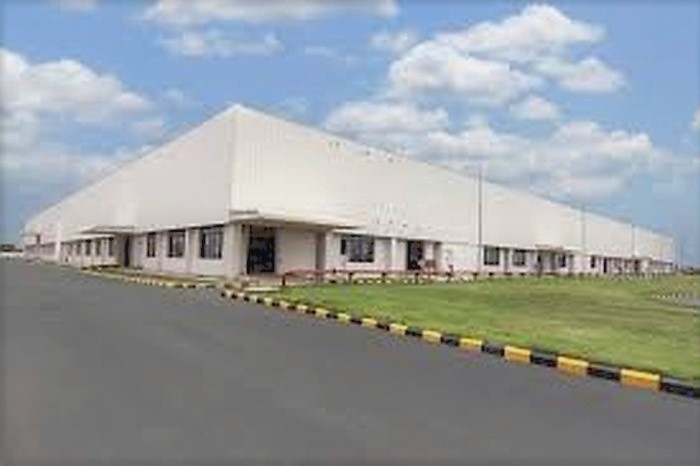The Coming Disruption of Industrial Real Estate

There are a few technologies (exponentially improving, driven by variants of Moore’s Law) that are in various stages of an 'S' growth curve in both performance and market acceptance. When deployed to the market in a combinatorial manner, these technologies will present a unique threat/opportunity to disrupt industrial real estate and related markets due to changes in customers' supply chains. The disruption will most likely vary by market in both timing and scalability. In a prospective manner, as William Gibson has written, “The future is already here—it’s just not very evenly distributed.”
Recommendation: Organize your strategic real estate leaders and form an enterprise cross-functional team to define your challenge; enlist internal and external subject matter experts; scenario-plan the future of supply chains and the resulting impact on industrial real estate. Outputs will include how best to shape your CRE investment to take advantage of defined opportunities and reduce exposure to identified risk, based on long-term scenario analysis.
Your goal is to understand at a high level the cone of future scenarios of supply chain evolution and determine the most versatile industrial building types, locations (relative to the end-customer), favorable demographic-geographic market attributes (absolute as well as trended), future value-add services that may be needed to compete; and then execute your operations and investment portfolio decisions into your future investment/divestment pipeline.
In addition, you should measure, evaluate and ascribe a value to your own current real estate investments using this same criteria—objectively measure and track metrics that drive value today and into the future. This mash-up metric could include geo-mapping data for distance as well as transportation/response times, transportation alternatives, demographic data within X space/time (population, income, disposable incomes, and wage growth), industry drivers and growth potential short and long term, etc.). A great book on the differentiating value of location/markets/growth is The New Geography of Jobs by Enrico Moretti. How does the market ascribe this relative valuation? Does your relative valuation differ from the market in the short/long term? If so, have you uncovered an opportunity?
What is the price of inaction or lack of execution?
The relative level of disruption most likely will be similar to the experience in suburban commodity office space, where significant degradation in asset value occurred (unevenly by market), with an overall reduction in space demand resulting in over-supply, repeating itself year after year.
If you did not have a chance to experience the suburban office market cycle as a landlord, just imagine a world where year after year, customer demand shrinks for your product despite a roaring economy. Your customers are doing great, business is up, and employee count is up as well. Your customers simply don’t need as much space to operate; they are becoming more efficient—and this efficiency in costing you money. This annual degradation in demand continues unabated, like a very slow-moving tsunami, swamping landlords and office parks across the country. Historically, employment and the economy had always been a great predictor of office demand. UNTIL IT WASN'T. The driver in this ongoing transformation includes new business models powered by exponential and combinatorial technologies that were stitched together to create something very new. New business models provide real estate as a service, identifying excess unused capacity, ultimately yielding much higher utilization rates, with the downside (at least from a landlord’s perspective) of the need to reduce supply. In an industry that had not seen much change in the previous decades, it has been and will continue to be devastating to historical players that are/were unable to adapt. However, experience from market to market varies significantly. There is much to learn from this variation.
Now if you take that same scenario and play it out in industrial space, what might you find? Market disruption happens in the margins. Imagine a world where demand for industrial space reduces year over year regardless of level of economic activity and world trade; negative net absorption replaces the historical model of 50-300 MSF annual demand absorption. New build-to-suit space is highly preferable over existing stock. The resulting deceleration of demand, accelerating building obsolescence will degrade industrial building value in certain locations, markets and building types. Your mission, if you choose to accept it, should be to find the industrial real estate sweet spot, where one can enjoy good returns on your current portfolio and have resiliency in your business model. One that promotes an ability to compete, demand a premium for your product/services in the future, driven by disruptive supply chain business models. What services will provide a competitive advantage, provide differentiation in the marketplace? What value can be uncovered in business data that can provide value to customers, consultants or an untapped customer segment?
What are the technologies that could prove to be so disruptive?
A sample of the technologies in play includes the following: AI (both machine learning and deep learning systems); blockchain technology; robotics and autonomous transportation systems (ground and aerial); additive manufacturing systems (3-D printing) and applied materials; IoT and mesh networks; wireless network technologies (5G / 6G ++); electric vehicles, solar and battery technology. These are but a few of the emerging technologies that will impact our future supply chains. Most of you have seen individual presentations on each but what is not known are the future combinations and timing of those combinations that may occur.
These technologies will be combined with other non-exponential improvements, e.g., materials packaging, new business models, transportation infrastructure, as well as other influences (think STEEP-C analysis - Social, Technology, Economic, Environmental, Political, and Competition). The frenzied pace of incremental efficiencies (in addition to the potential exponential changes) in supply chain networks will continue on an arithmetic scale (% improvement).
If the disruption is similar to our suburban office example, the disruption will start from combinations of tech and business models. It could leverage both mature and emerging technologies, manifested via a new competitor inserting themselves into your marketplace with a very different value proposition, and a different business model.
The drivers in this continuing transformation are new business models powered by exponential and combinatorial technologies that are stitched together to create something very new. New business models that provide real estate as a service, identifying excess/unused capacity, and ultimately leading to higher utilization rates, resulting in oversupply. In an industry that has not seen much change in the previous century, it has been and will continue to be devastating to historical players who are unable to adjust to this new reality.
Why should you change?
Presently, industrial customer demand has placed the wind at your back. Since the Great Recession, customer demand has increased unabated, year after year. E-commerce retail sales have grown annually, far in excess of traditional retail sales. This trend will continue to disrupt retail real estate and drive re-purposing of retail real estate.
Your industrial customers, however, are evolving, modifying and improving their supply chains in shorter and shorter cycles, re-engineering to meet and/or exceed customer expectations. At the same time, e-commerce retail customer expectations have moved dramatically. In just the last few years, customer expectation have gone from delivery in a week, to delivery in days, to two days and now one day—and in some markets, one-hour delivery. This customer expectation has resulted in significant re-tooling of supply chains. Improvements in supply chain costs and efficiency are required core competencies just to enable companies to stay in the game.
Summary: The evolution of supply chains has followed a familiar pattern: from slow reactive systems to an anticipatory (real-time) system; an evolution starting with the long-term goal of supplier integration, morphing to supplier collaboration, adding flexibility and resilience as core requirements, and ultimately leading to a demand driven transformation. The ability to react to customer demand real-time and orchestrate a supply chain as an immediately responsive network has been a long-term goal for most companies. Many of your customers are moving along this evolutionary continuum—striving to achieve this demand-driven model.
The evolution of supply chains driven by customer demand will impact Industrial Real Estate significantly. For those companies that get in front of this, consider options and properly execute, there is great opportunity. For those that do not, the risks are rising—time is not on your side. How this evolution manifests itself in future location decisions, transportation methods, raw materials movement and storage, location and method of manufacturing, reverse logistics, labor supply, demographics, wage growth—is for you to find out. Sooner rather than later.
This Week’s Sponsor
Prescriptive Data is focused on the intersection of IoT, big data and machine learning as applied to built spaces. Our flagship cloud-based building operating system, Nantum applies machine learning to synthesize predictions from live and historic data to optimize operational efficiency, thereby increasing the underlying value of real estate assets. The Nantum suite includes products for building core and shell, enterprise tenants and building occupants.
Read Next
 4/18/2024
4/18/2024
Best Practices for Managing Lease Renewals When your commercial leases come up for renewal, it’s a great opportunity to assess your real estate portfolio, consider the value of current leases and possibly negotiate better terms.
 4/11/2024
4/11/2024
3 Reasons to Incorporate AI Into Your Talent Retention Strategy Introducing new technology into the workplace is often met with suspicion.
 4/4/2024
4/4/2024
Operational Technology (OT) Data Data has been a cornerstone of business since the early days of computing in the 1960s.
 3/28/2024
3/28/2024
The Tech-Forward Response to Rising CRE Cap Rates is Also People-First Cap rates on commercial real estate have been rising for five consecutive quarters, leading to an estimated 20% drop in value for many property types, according to CBRE’s latest U.S. Real Estate Market Outlook.





.jpg)


